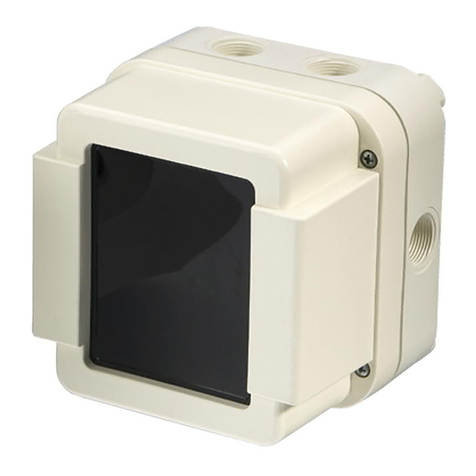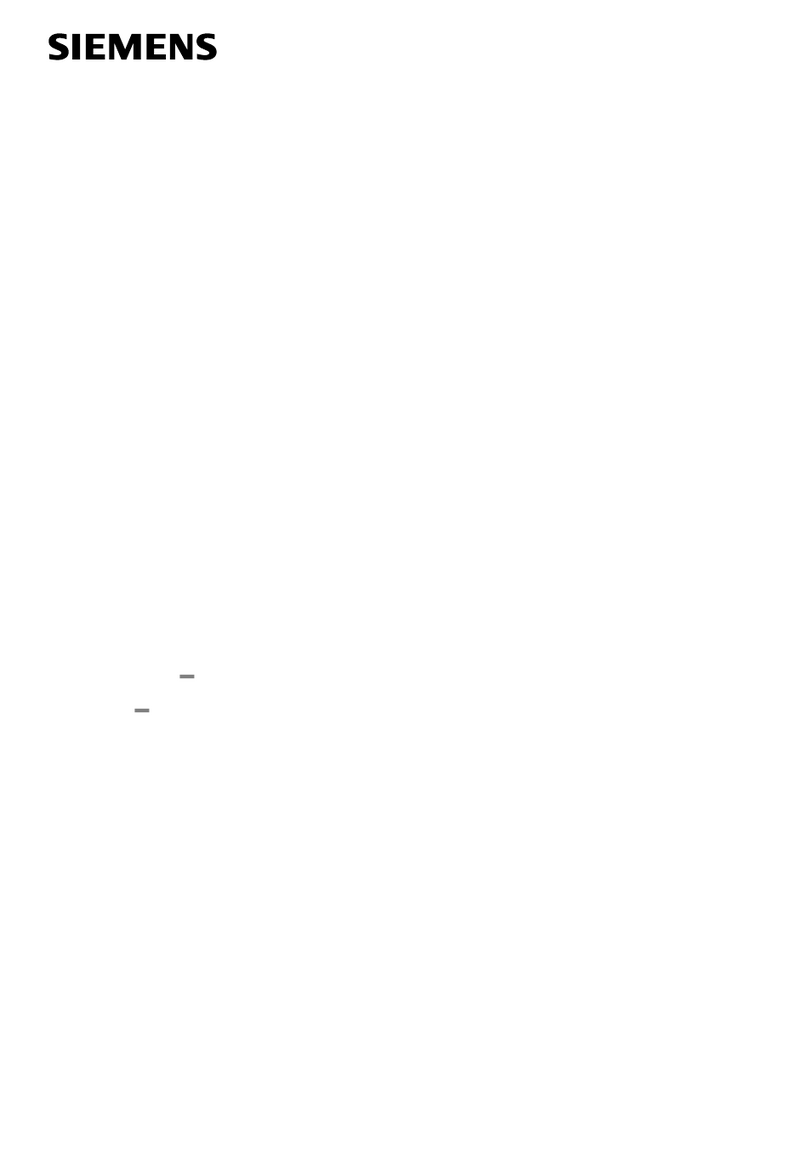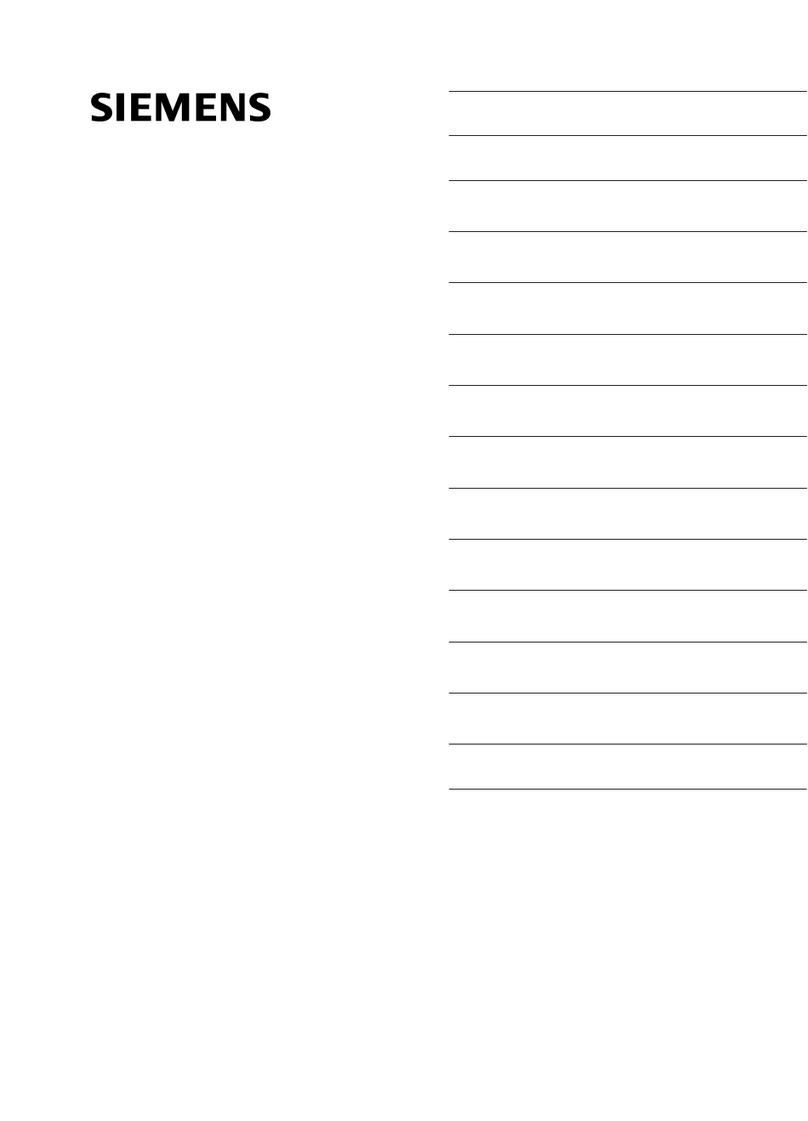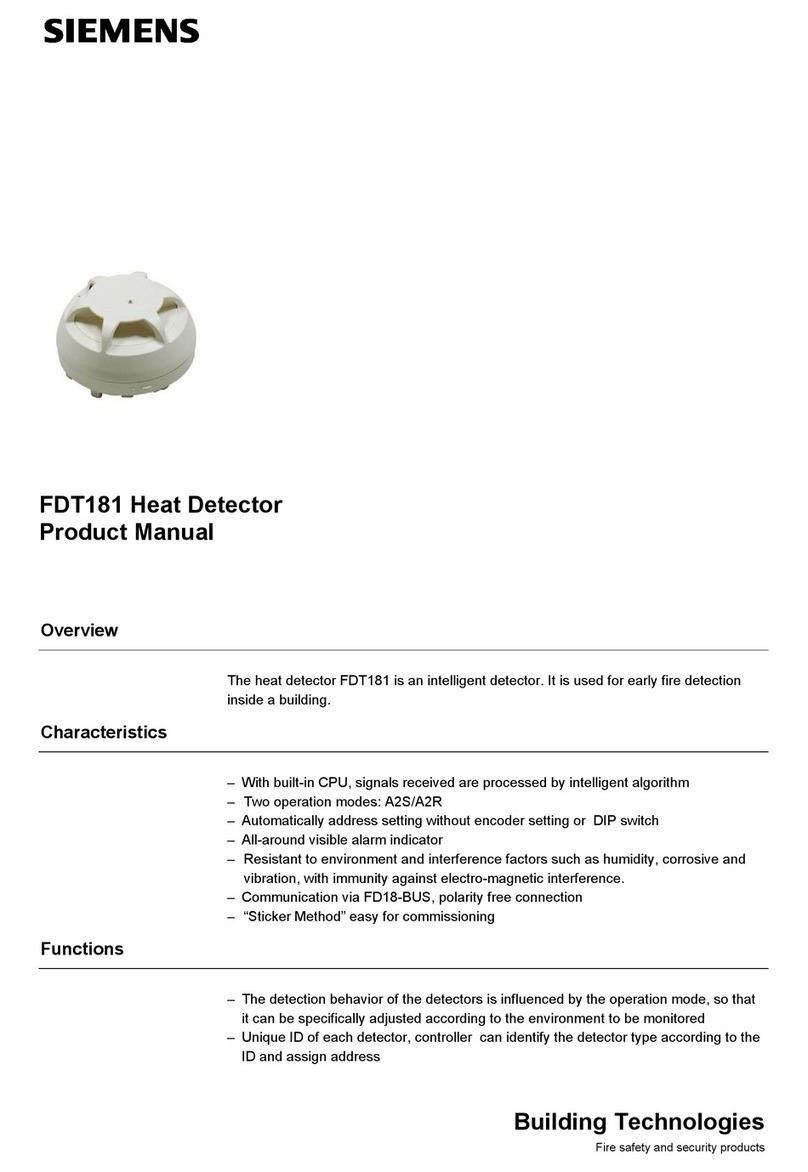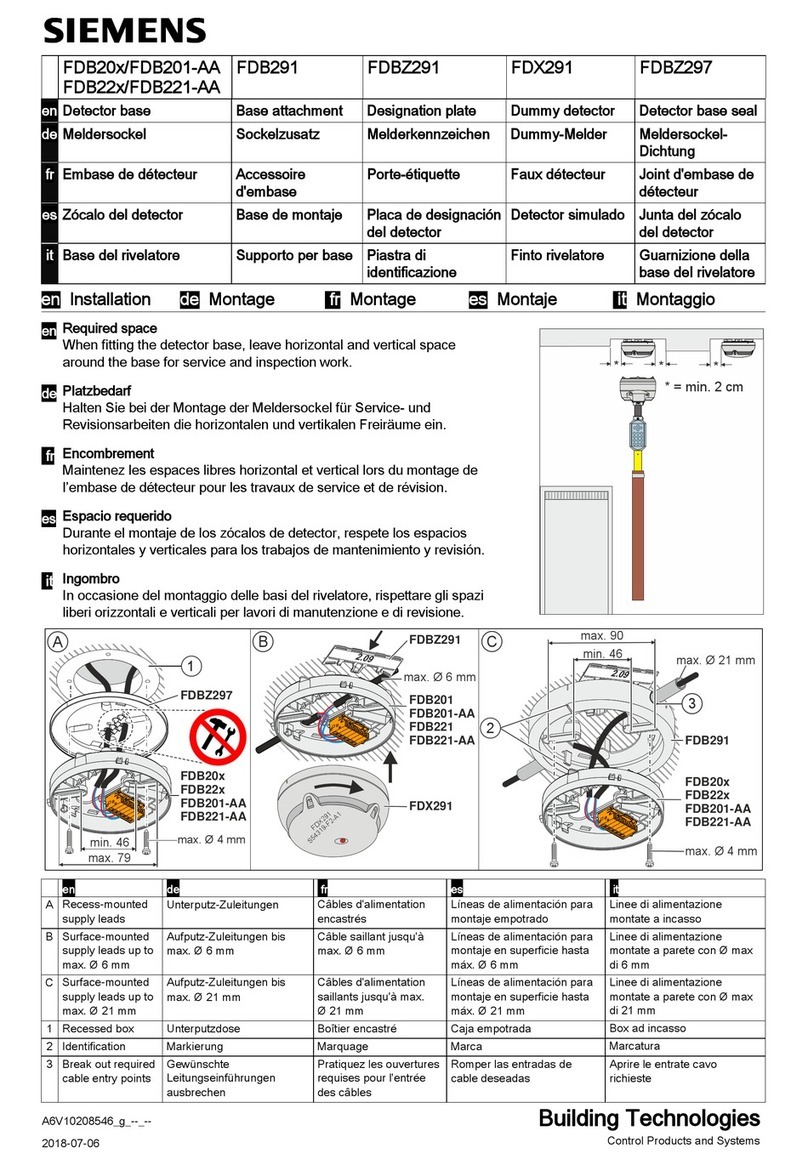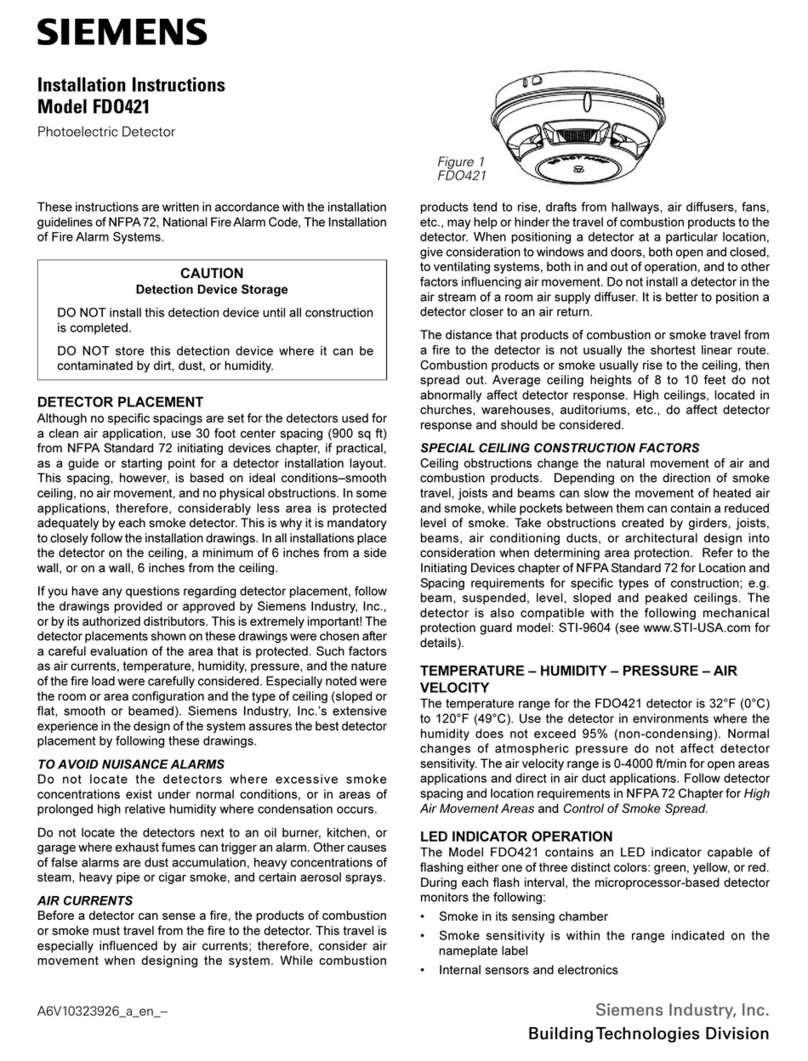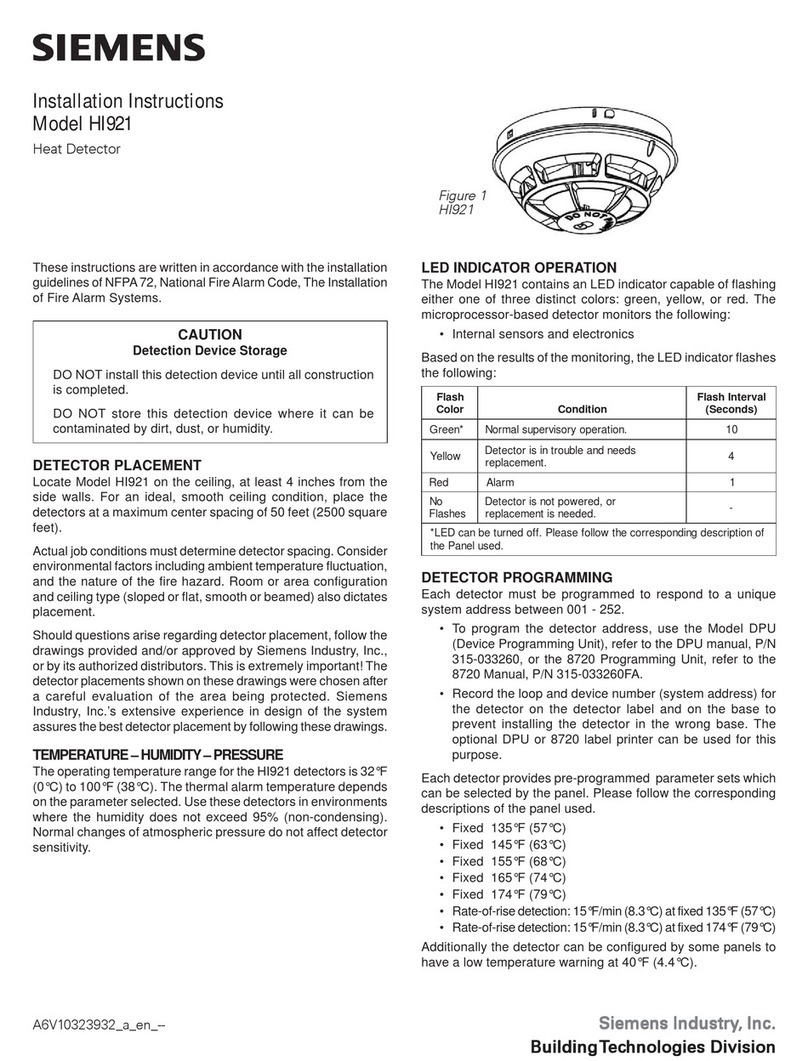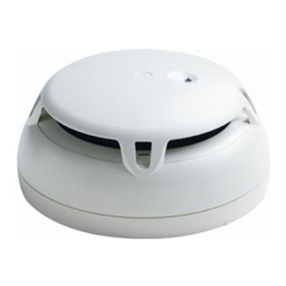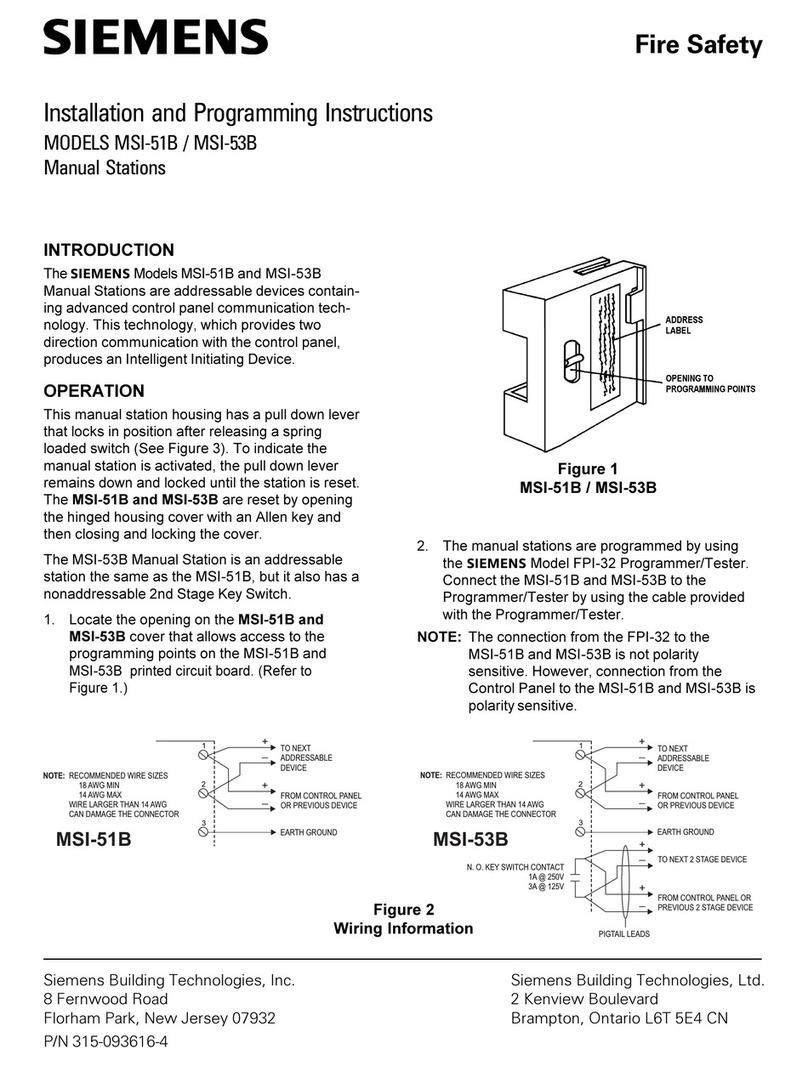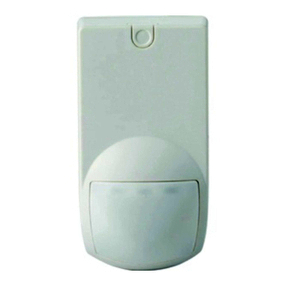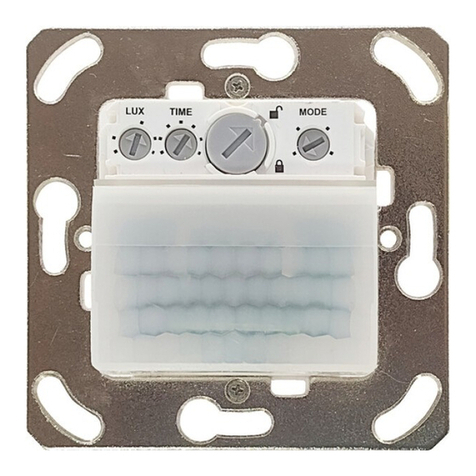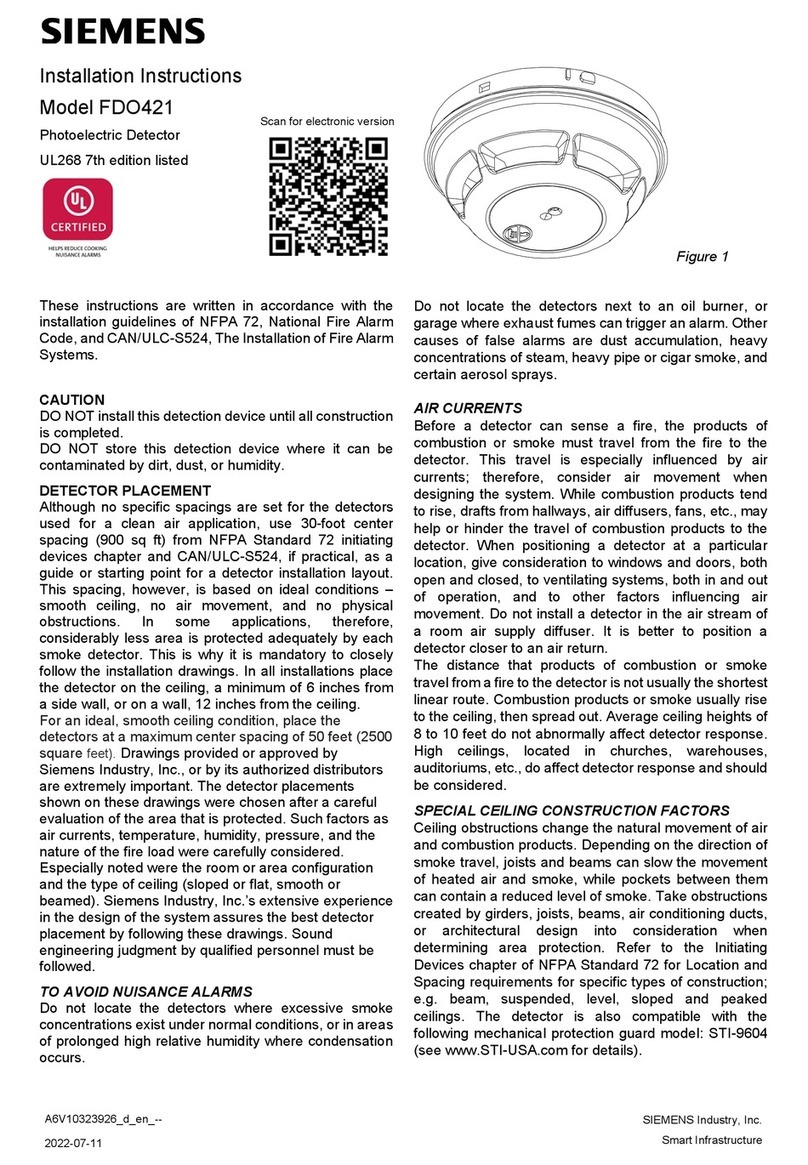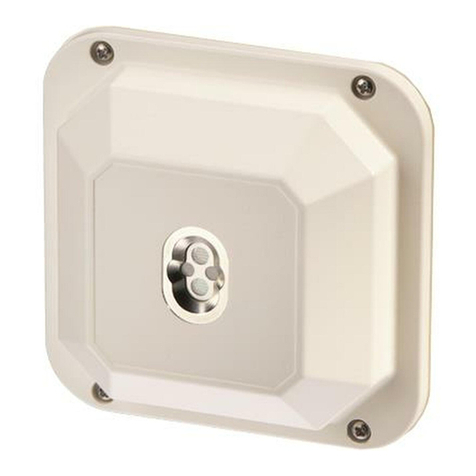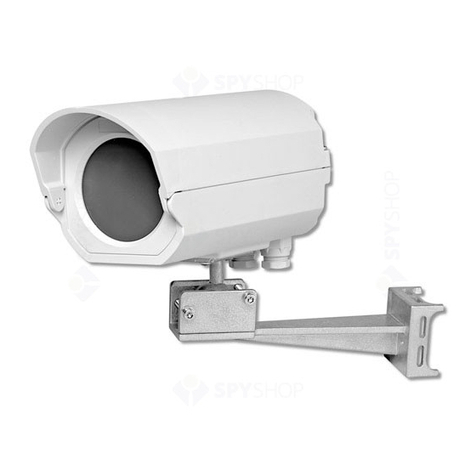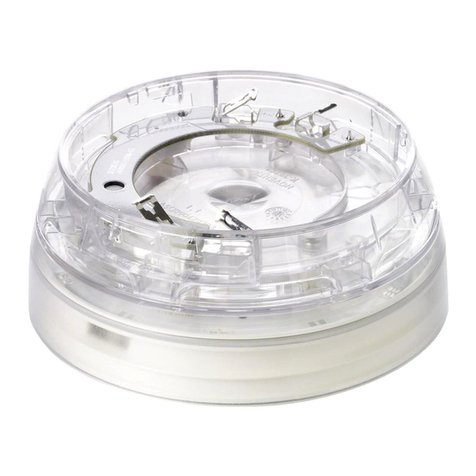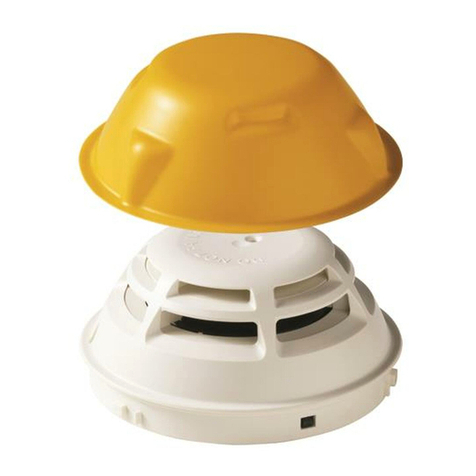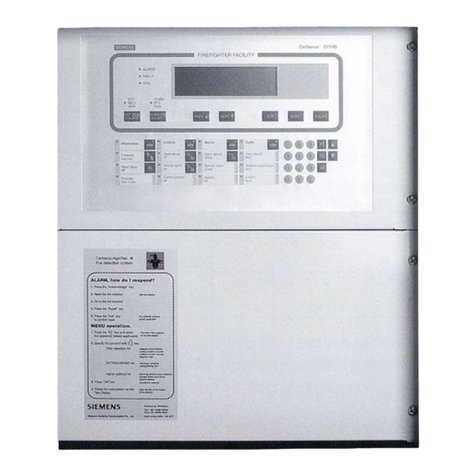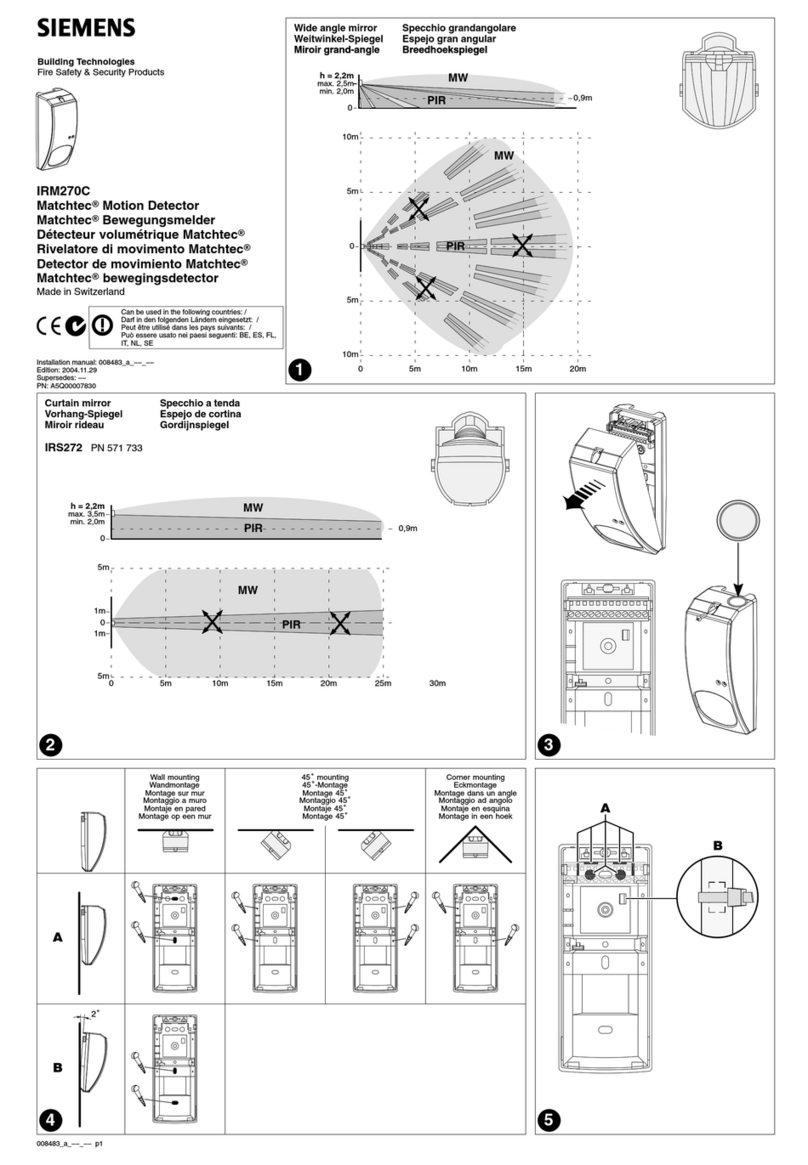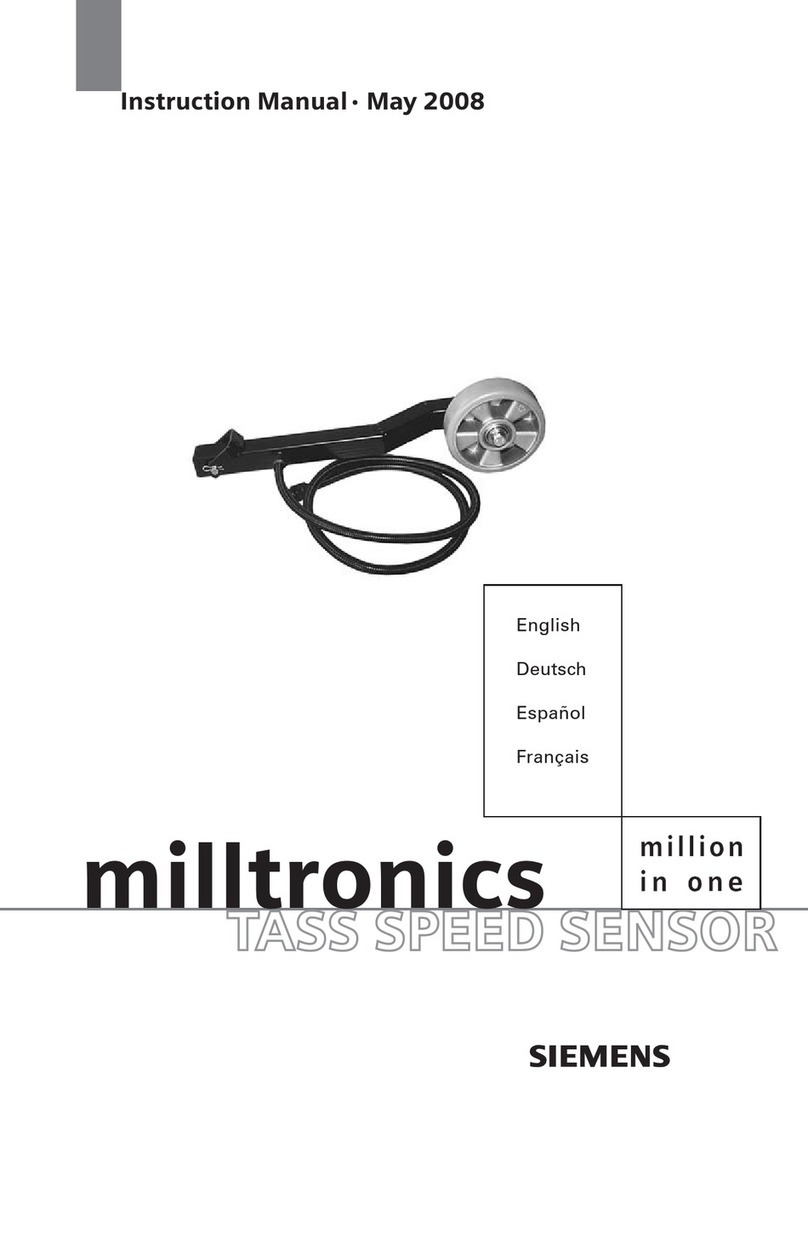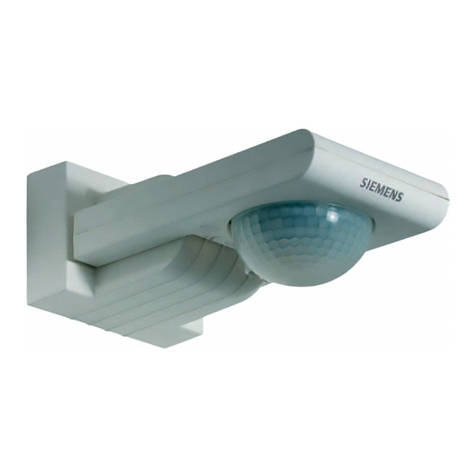
SiemensSiemens
SiemensSiemens
Siemens IndustryIndustry
IndustryIndustry
Industry,,
,,
,Inc.Inc.
Inc.Inc.
Inc.
BuildingBuilding
BuildingBuilding
Building
TT
TT
Tecec
ecec
echnologies Dihnologies Di
hnologies Dihnologies Di
hnologies Divisionvision
visionvision
vision
A6V10324657_en--_f
These instructions are written in accordance with the installation
guidelines of NFPA 72, National Fire Alarm Code. The model
FDOOTC441 detector (shown in Figure 1) meets the VEWFD
(Very Early Warning Fire Detector) classification and sensitivity
requirements of NFPA 76 (Standard for the Fire Protection of
Telecommunications Facilities) incorporating a programmable
“Alert” (Pre-Alarm) sensitivity threshold of 0.2%/ft obscuration
and an “Alarm” sensitivity threshold of 1.0%/ft obscuration.
CAUTION
Detection Device Storage
DO NOT install this detection device until all construction
is completed.
DO NOT store this detection device where it can be
contaminated by dirt, dust, or humidity.
DETECTOR PLACEMENT
Although no specific spacings are set for the detectors used for
a clean air application, for multi-criteria fire detection use 30
foot center spacing (900 sq ft) from NFPA Standard 72 initiating
devices chapter, if practical, as a guide or starting point for a
detector installation layout. This spacing, however, is based on
ideal conditions–smooth ceiling, no air movement, and no
physical obstructions. In some applications, therefore,
considerably less area is protected adequately by each smoke
detector. This is why it is mandatory to closely follow the
installation drawings. In all installations place the detector on
the ceiling, a minimum of 6 inches from a side wall, or on a wall,
12 inches from the ceiling. For CO gas detection applications,
follow detector installation requirements in NFPA720, Standard
for Installation of Carbon Monoxide Detection and Warning
Equipment.
ForFMApprovedinstallations,thisdevicehasanRTIratingofQUICK.
For thermal detection, use the matrix below:
teeF,gnicapS,gnitaRerutarepmeT
0
FledoMdrauGtuohtiW/htiW
05571,561,551,541,531drauGtuohtiWdnahtiW
06571,561,551,541,531drauGtuohtiW
06551,541,5
31drauGhtiW
07541,531drauGtuohtiW
07531drauGhtiW
If you have any questions regarding detector placement, follow
the drawings provided or approved by Siemens Industry, Inc.,
or by its authorized distributors. This is extremely important! The
detectorplacements shownonthese drawings werechosen after
a careful evaluation of the area that is protected. Such factors
as air currents, temperature, humidity, pressure, and the nature
of the fire load were carefully considered. Especially noted were
the room or area configuration and the type of ceiling (sloped or
flat, smooth or beamed). Siemens Industry, Inc.’s extensive
experienceinthe design of the system assuresthebest detector
placement by following these drawings.
TO AVOID NUISANCE ALARMS
Do not locate the detectors where excessive smoke
concentrations exist under normal conditions, or in areas of
prolonged high relative humidity where condensation occurs.
Do not locate the detectors next to an oil burner, kitchen, or
garagewhereexhaust fumes can trigger analarm.Other causes
of false alarm are dust accumulation, heavy concentrations of
steam, heavy pipe or cigar smoke, and certain aerosol sprays.
AIR CURRENTS
Before a detector can sense a fire, the products of combustion
or smoke must travel from the fire to the detector. This travel is
especially influenced by air currents; therefore, consider air
movement when designing the system. While combustion
products tend to rise, drafts from hallways, air diffusers, fans,
etc., may help or hinder the travel of combustion products to the
detector. When positioning a detector at a particular location,
give consideration to windows and doors, both open and closed,
to ventilating systems, both in and out of operation, and to other
factors influencing air movement. Do not install a detector in the
air stream of a room air supply diffuser. It is better to position a
detector closer to an air return.
The distance that products of combustion or smoke travel from
a fire to the detector is not usually the shortest linear route.
Combustion products or smoke usually rise to the ceiling, then
spread out. Average ceiling heights of 8 to 10 feet do not
abnormally affect detector response. High ceilings, located in
churches, warehouses, auditoriums, etc., do affect detector
response and should be considered.
SPECIAL CEILING CONSTRUCTION FACTORS
Ceiling obstructions change the natural movement of air and
combustion products. Depending on the direction of smoke
travel, joists and beams can slow the movement of heated air
Figure 1
FDOOTC441
Multi-Criteria Fire/CO Detector
Installation Instructions
Model FDOOTC441
